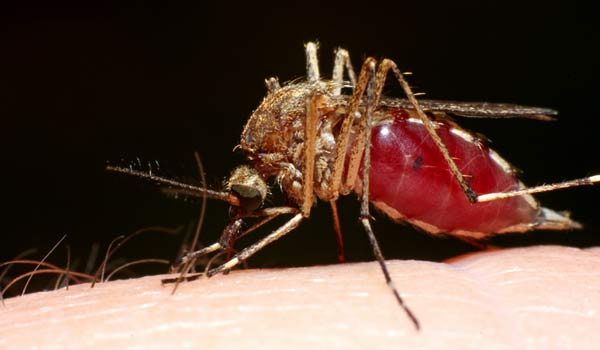5 Things You Need to Know About West Nile Virus

In the wake of 10 deaths due to West Nile virus, and hundreds of infections, authorities in Texas are spraying insecticide in the Dallas region, hoping to curb the spread of the disease, which can spread by mosquitoes.
A total of 693 cases of West Nile virus infections, including 26 deaths, were reported as of Aug. 14 to the Centers for Disease Control and Prevention (CDC). The number of cases reported by this second week in August is the highest since 1999, when the disease was first seen in the U.S., according to the CDC.
About 60 percent of this year's cases have involved the "neuroinvasive" form of West Nile infection, in which the nervous system is affected. Such cases can cause inflammation of neural tissues, such as meningitis and encephalitis. More than 80 percent of all reported cases were from six states (Texas, Mississippi, Louisiana, Oklahoma, South Dakota and California), and almost half of all cases have been reported from Texas.
Here are five things you need to know about West Nile virus:
1. What is West Nile virus?
West Nile virus is a type of virus called a flavivirus. Other viruses in this group cause dengue, yellow fever and Japanese encephalitis. Flaviviruses are commonly transmitted by ticks and mosquitoes. West Nile virus was first identified in Uganda in 1937, according to the National Institutes of Health (NIH).
2. How does West Nile Virus spread?
Get the world’s most fascinating discoveries delivered straight to your inbox.
It is likely that West Nile is spread from birds to people through mosquito bites, the NIH says. Early fall is the time of year that mosquitoes tend to have the highest levels of the virus, and human cases tend to peak around this time.
The virus can also be spread through blood transfusions and organ transplants. Pregnant women can transmit the virus to their fetus, and mothers can transmit it to babies through breast milk, the CDC says.
West Nile virus cannot be spread by casual contact, or touching or kissing an infected person, according to the CDC.
3. What are the symptoms of a West Nile infection?
About 80 percent of people infected with West Nile show no symptoms at all, according to the CDC.
The other 20 percent have symptoms such as fever, headache, body aches, nausea, vomiting and sometimes swollen lymph glands. Some develop a rash on the chest, stomach and back. Symptoms may last anywhere from a few days to several weeks.
Severe forms of West Nile, which affect the nervous system, can be life-threatening. The NIH says that the following symptoms need prompt medical attention: muscle weakness, stiff neck, weakness in one arm or leg, confusion or a change in ability to think clearly and loss of consciousness or coma.
4. How can I prevent catching West Nile?
The CDC recommends using an insect repellent that contains one of the following ingredients: DEET, picardin, oil of lemon eucalyptus (or a synthetic version of this oil, called PMD), or IR3535. These ingredients are suggested by the Environmental Protection Agency because they provide reasonably long-lasting protection against mosquito bites.
The CDC also suggests wearing long sleeves and pants, or staying indoors, at dusk and dawn, when mosquitoes are most active.
Mosquitoes breed in standing water, and so removing standing water from flower pots, pet dishes, buckets and barrels can reduce the risk of transmission. Children's wading pools should be emptied and stored on their sides when not in use.
5. How is West Nile virus treated?
There is no treatment for West Nile virus infections, according to the CDC.
Mild symptoms can resolve on their own. People with severe symptoms may need to be hospitalized and receive intravenous fluids or help with breathing, the CDC says.
Pass it on: Authorities in Dallas are spraying insecticide, hoping to curb the spread of the West Nile Virus, which has killed 10.
This story was provided by MyHealthNewsDaily, a sister site to LiveScience. FollowMyHealthNewsDaily on Twitter @MyHealth_MHND. We're also on Facebook & Google+.



